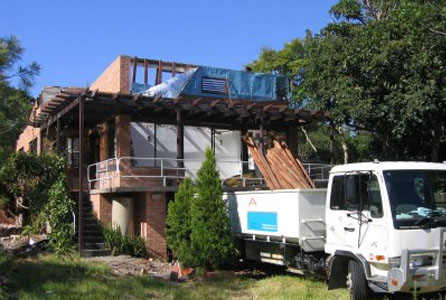
Eco Friendly Demolition
While the demolition of structures may seem like the furthest thing from eco-friendly, there are methods being employed in modern demolition to minimize pollution caused by the practice and to recycle materials that can be reused. For instance, deconstruction is a technique of demolition that takes much longer than explosive or wrecking ball demolition but it allows for progressive sorting of materials that can be recycled and even resold for a profit. Rather than creating mixed debris through violent destruction, deconstruction involves taking a building apart in pieces. Generally a team is present and will work with handheld power tools while high reach demolition machine operators assist with large, steel I-beam removal and for segmenting pieces of metal that are too wide to quickly cut through using handheld saws.
Eco-Conscious Demolition – Oxymoronic?
It may seem like no matter what is done to prevent pollution from getting in the air and surrounding properties after a demolition job but there are ways that air particulate can be contained using vacuums: these are especially important for the deconstruction of buildings made with asbestos containing materials (ACMs). Many materials used in construction contained asbestos during the 70’s including:
- Concrete in foundations and structure
- Wall and roof insulation
- Pipe-wrapping
- Drywall
Even drywall pieces can be salvaged if the deconstruction is done by a professional team. It is not uncommon for deconstruction to yield enough salvage material to considerably offset the exuberant prices charged for months of labor and equipment costs. Even with the profits gained by selling steel beams, wooden planks and drywall you can still expect this process to be more expensive than demolition via explosion.
Hazardous Waste Management
One reason why people choose to make use of an eco-friendly demolition method rather than a simple one such as using a wrecking ball or timed charges is the presence of asbestos or other hazardous waste in the materials used to make the building being demolished. Asbestos fibers are only released from ACMs when the materials are broken or have degraded. Because of this, deconstruction remains the best option for effectively disposing of ACMs. Insulation, concrete or other materials that contain asbestos must first be wet down with water before being transported. This makes the fibers heavy so that they fall to the floor before being able to be breathed in by workers. There are several safety precautions that must be taken prior to working in areas with asbestos. These include but aren’t limited to:
- Hazard-suits
- Goggles
- Gloves
- Booties
Deconstruction
If you know that the building you’re planning on demolishing was built with asbestos or if you’re an eco-friendly supporter and prefer that the building be disassembled rather than demolished, deconstruction is ideal. This option is more expensive but it reduced air pollution and debris related with demolition via wrecking balls or explosive charges. Another reason you may opt for deconstruction versus demolition is if you personally want to salvage materials from the building for construction of a new structure that you have in mind.
